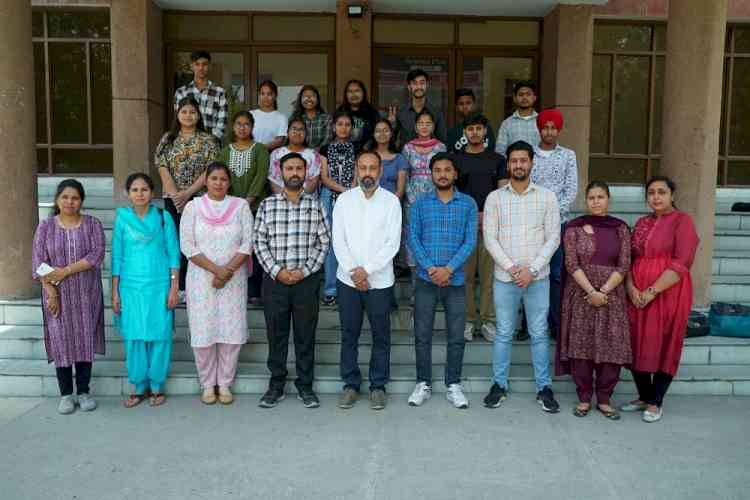NGO Dastak Welfare Council launches Weaver Bird Conservation and Awareness Programme
Author(s): City Air NewsProf. Sandeep Chahal, Ashwani Kumar, Ajay Aggarwal, Dr Ashwani Aggarwal and Dr. S.S. Dhingra launching weaver birds conservation programme in Pratap Bagh, Jalandhar. Jalandhar, June 29, 2014: NGO Dastak Welfare...


Prof. Sandeep Chahal, Ashwani Kumar, Ajay Aggarwal, Dr Ashwani Aggarwal and Dr. S.S. Dhingra launching weaver birds conservation programme in Pratap Bagh, Jalandhar.
Jalandhar, June 29, 2014: NGO Dastak Welfare Council launched Weaver Bird Conservation and Awareness Programme in Partap Bagh today. President Prof Sandeep Chahal, Secretary Ajay Aggarwal, Vice President Ashwani Kumar, Consultants Dr S.S Dhingra(MD), Harnoor Dhingra, Dr Ashwani Aggarwal, Vikas Sachdeva, Manoj Kumar launched the drive.
Ajay Aggarwal and Ashwani Kumar said that Dastak would launch awareness drive through seminars to educate people about ecological significance of weaver birds. Ajay Aggarwal, Ashwani Kumar said that during 2007 to 2013 NGO Dastak has installed 500 wooden nests free of cost in different residential area of Jalandhar under Save Sparrows Programmes and now it shall undertake conservation of weaver bird programme by educating people about its relevance.
Prof Sandeep Chahal said that the colourful Baya Weaver (Ploceus philippinus) or Bijda is a weaverbird found across the Punjab and Indian Subcontinent . The weaver bird colonies are usually found close to water bodies during the onset of monsoon season in the months of June and July.
Baya Weavers are best known for the elaborately woven nests constructed by the males. These pendulous nests are retort-shaped, with a central nesting chamber and a long vertical tube that leads to a side entrance to the chamber. the nests are woven with long strips of paddy leaves, rough guinea grasses and long strips torn from palm fronds. Each strip can be between 30 and 60 cm in length. A male bird is known to make up to 500 trips to complete a nest with more than 3000 strips. The nests are often built hanging over water from thorny and palm trees to keep safe from predators like hawks and snakes. Prof Sandeep Chahal said that that during a field study he and his team found that the male weaver bird usually takes about 18-20 days to construct the complete flask shaped nest whereas the intermediate "helmet shaped nest" takes about 8-10 days. Initially the nests are partially built like helmet shaped and the female weaver bird is called by the male to inspect the incomplete helmet shaped nest. After her acceptance and approval they together go on to complete the nest by adding the entrance flask like tunnel. This is a semblance to a unique human trait of cohabitation amongst humans and role of woman in housekeeping which is well exhibited by weaver birds. Weaver birds have ecological significance as they are insectivorous and help in maintenance of ecological balance. The members of Dastak organised awareness drive in village Wadala to motivate the populace to not to destroy and dislodge nests during monsoon season.

 cityairnews
cityairnews 

















